11 Popular Wood Types and Their Best Uses
- July 22, 2024
- 0 comment
Explore the best uses for 11 popular wood types in this essential guide. Find the perfect wood for every project. Wood plays an essential role in both our everyday and specialized projects. Whether it’s crafting furniture, building homes, or creating decorative items, choosing the right type of wood is crucial to achieving both durability and aesthetic appeal.
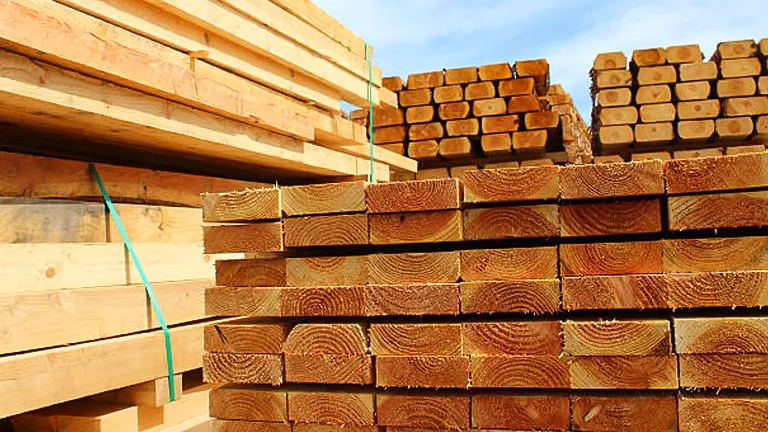
This guide delves into the characteristics, best uses, and reasons for choosing 11 popular types of wood, providing you with the knowledge to make informed decisions for any woodworking project.
List of 11 Popular Wood Types and Their Best Uses
- Cedar Wood
- Maple Wood
- Poplar Wood
- Teak Wood
- Pressure-Treated Lumber
- Oak Wood
- Walnut Wood
- Mahogany Wood
- Ash Wood
- Pine Wood
- Beech Wood
Understanding Hardwood and Softwood

When you start on a woodworking project, the choice between hardwood and softwood is crucial, impacting everything from the project’s aesthetics to its durability. It’s important to note that the terms “hardwood” and “softwood” don’t simply refer to the wood’s physical hardness but rather to the botanical classification of the trees from which they are harvested.
Hardwood Characteristics
Hardwoods originate from angiosperm trees, which are deciduous and bear fruits with seeds. These trees have broad leaves that typically shed annually and grow more slowly, contributing to the wood’s higher density.
Density and Durability: On average, hardwoods display a density of about 600-900 kg/m³, which significantly enhances their durability. This makes hardwoods especially valuable for furniture and flooring that require long-lasting materials.
Scientific Insight: Hardwoods like oak and maple exhibit a Janka hardness rating—a scale measuring the resistance of wood to wear and denting—ranging from 1,200 to 1,450 pounds-force, indicating their suitability for high-impact applications.
Examples and Uses:
- Oak: With a Janka hardness of approximately 1,350 pounds-force, oak is robust, making it ideal for high-traffic flooring and load-bearing furniture.
- Mahogany: Known for its beauty and a Janka rating of about 800 pounds-force, it is less hard than oak but highly resistant to rot, perfect for boat construction and fine furniture.
- Maple: One of the hardest with a rating of around 1,450 pounds-force, maple is excellent for kitchen utensils and areas receiving frequent use.
Softwood Characteristics
Softwoods come from gymnosperm trees, which typically have needles and cones. These trees grow more quickly than hardwoods and are predominant in colder northern climates.
Lightness and Flexibility: Generally lighter with a density ranging from 350 to 500 kg/m³, softwoods are easier to manipulate and often used where the wood’s appearance is less crucial, such as in structural frameworks.
Scientific Insight: Softwoods like pine and cedar have lower Janka ratings, usually under 600 pounds-force, which makes them less suitable for flooring but ideal for applications where flexibility and lightness are advantageous.
Examples and Uses:
- Pine: Widely appreciated for its cost-effectiveness and a Janka rating of about 420 pounds-force, making it suitable for decorative furniture and interior paneling.
- Cedar: With natural rot and insect resistance and a Janka hardness of approximately 350 pounds-force, cedar is perfect for outdoor environments.
- Spruce: Commonly used in construction due to its strength and a Janka rating of around 480 pounds-force, ideal for framing houses.
Choosing Between Hardwood and Softwood
The choice between hardwood and softwood depends on the specific requirements of your project. Hardwoods, with their dense and durable nature, are suited for high-quality furniture and flooring where longevity and aesthetics are priorities. Softwoods, being more cost-effective and easier to source, excel in structural applications, everyday furniture, and outdoor projects where resistance to the elements is crucial.
Comparative Table
| Wood Type | Density (kg/m³) | Janka Hardness (pounds-force) | Typical Uses |
|---|---|---|---|
| Oak | 750 | 1,350 | Flooring, furniture |
| Mahogany | 545 | 800 | Boat construction, furniture |
| Maple | 755 | 1,450 | Cutting boards, high-impact areas |
| Pine | 415 | 420 | Decorative furniture, paneling |
| Cedar | 380 | 350 | Outdoor furniture, decking |
| Spruce | 450 | 480 | Construction framing |
11 Popular Wood Types and Their Best Uses
1. Cedar Wood

Cedar, a softwood renowned for its vibrant reddish hue and distinctive aroma, is primarily derived from the Western Red Cedar. This species thrives in moist climates and is valued for its natural oils that effectively repel insects and prevent decay.
Best Uses: Cedar is exceptionally suited for outdoor applications such as furniture, roofing shingles, and closet linings. The wood’s inherent oils enhance its durability, making it resilient against various weather conditions. Its aesthetic appeal and functional benefits also make it a favored choice for exterior and interior design projects.
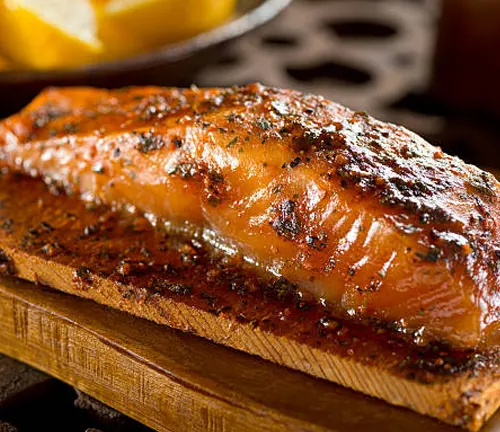
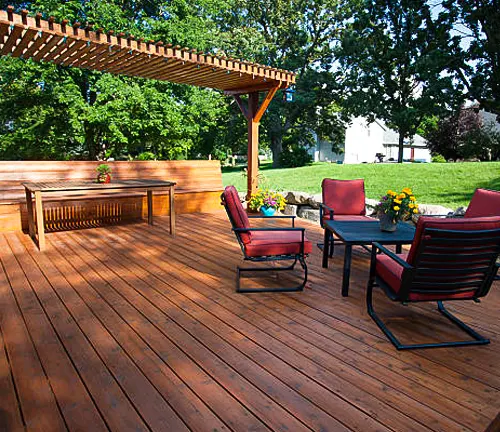
Choosing cedar offers multiple advantages:
- Moisture and Decay Resistance: Cedar’s ability to withstand moisture and resist decay extends its lifespan, particularly in outdoor settings.
- Pest Deterrence: The wood’s natural aromatic oils serve as a pest deterrent, protecting belongings from insect damage.
- Aesthetic Appeal: Cedar adds a warm, natural tone to any space, making it ideal for both functional and decorative use in homes and gardens.
Environmental Impact: Cedar is a sustainable option. It grows relatively quickly and is harvested from well-managed forests, minimizing environmental impact. Additionally, its durability means that products made from cedar last longer, reducing the need for frequent replacements.
2. Maple Wood
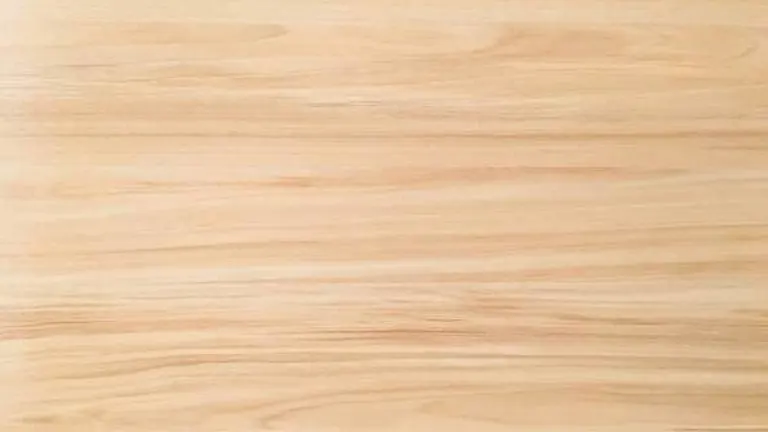
Maple is a highly valued hardwood, known for its exceptional strength and aesthetic appeal. It features a fine, uniform grain that varies in color from creamy white to a rich light reddish-brown. Predominantly found across North America and Europe, maple is both widely available and popular, used in a variety of premium woodworking projects.
Best Uses: Maple’s impressive durability and shock resistance make it an ideal choice for a range of high-quality applications. It is extensively used in the manufacture of upscale furniture, elegant hardwood flooring, and essential kitchen items such as cutting boards and rolling pins. Its hard surface is also perfect for high-traffic areas in homes and businesses.
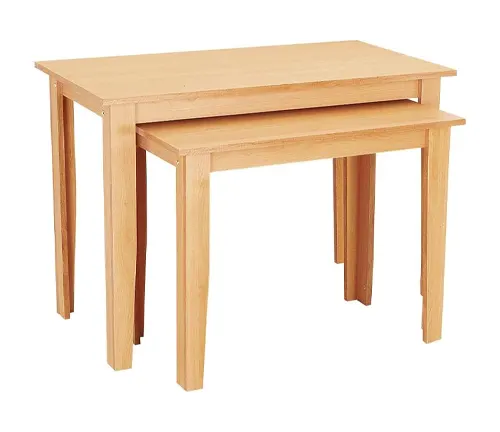
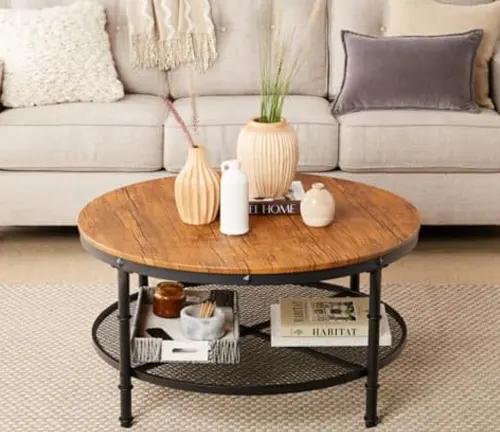
Choosing for maple wood brings several advantages:
- Durability: Maple is one of the hardest domestic woods, making it ideal for furniture and flooring that withstands the test of time.
- Aesthetic Quality: The wood’s fine grain and ability to take a smooth finish allow it to showcase a clean, sophisticated look that enhances any decor style.
- Maintenance: Maple’s resistance to abrasion and wear makes it a practical choice for items and areas that see frequent use.
Environmental Impact: Maple trees are sustainably harvested in many regions, ensuring that their use has a minimal environmental impact. The wood’s longevity also means that products made from maple are less likely to need replacement, contributing to sustainable consumption practices.
3. Poplar Wood
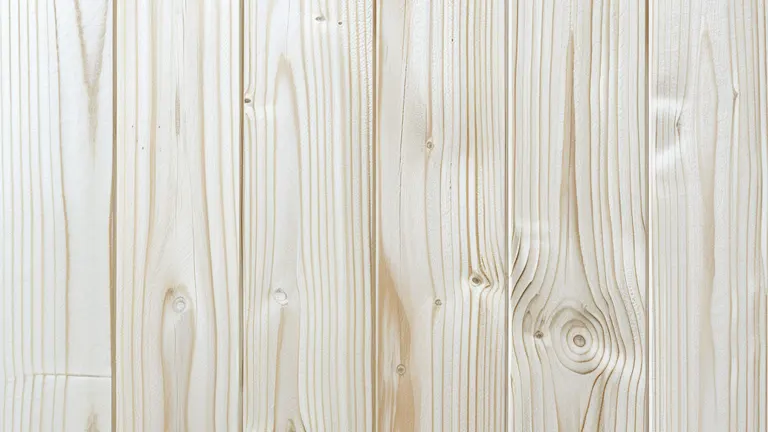
Poplar stands out as a lightweight hardwood, notable for its quick growth and pale color palette that ranges from soft yellows to creamy whites, often accented with streaks of green or brown. This rapid growth not only makes poplar an abundant resource but also positions it as an environmentally friendly choice due to its renewability and energy-efficient production process.
Best Uses: Poplar’s relatively soft texture, compared to other hardwoods, makes it particularly suitable for indoor applications where intricate workmanship is required. It is favored for creating detailed interior furniture, decorative moldings, and various craft projects. Its ease of manipulation and ability to take nails and screws without splitting are highly valued in custom woodworking and cabinetry.


Choosing poplar offers several advantages for both amateur and professional woodworkers:
- Affordability: Poplar is cost-effective, making it accessible for a wide range of projects, from large-scale furniture to small crafts.
- Workability: The wood’s softness and fine grain facilitate easy cutting, carving, and finishing. Poplar is excellent for detailed work and achieves a smooth, paint-friendly surface that is ideal for colorful furniture pieces or as a base layer in more complex constructions.
- Aesthetic Flexibility: While naturally beautiful, poplar’s light color and subtle grain make it an excellent canvas for stains and paints, allowing it to adapt to various design aesthetics.
Environmental Considerations: Poplar trees require less time to reach maturity compared to other hardwoods, reducing their carbon footprint and impact on natural forests. Their fast growth and ability to thrive in diverse climates make them a sustainable choice for responsible woodworking practices.
4. Teak Wood
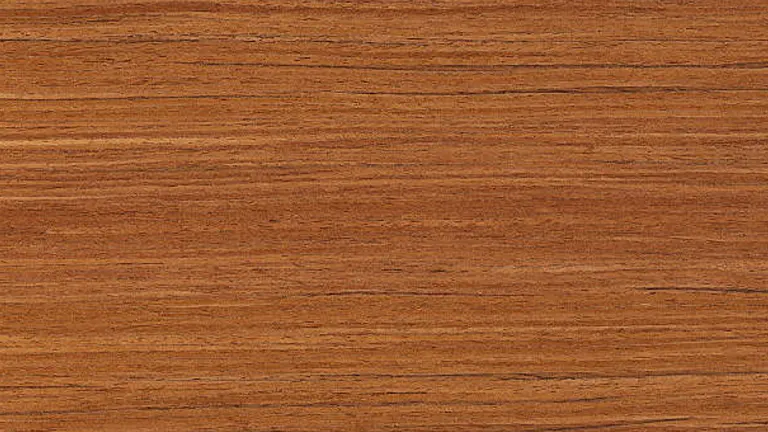
Teak is highly valued for its exceptional durability and natural oil content, which significantly enhance its resistance to weather and pests. This hardwood typically displays a golden to medium brown shade, with a straight grain that can occasionally interlock. Sourced primarily from tropical regions, teak is a premium wood often associated with luxury and high-quality craftsmanship.
Best Uses: The robust nature and water-resistant properties of teak make it the ideal wood for crafting outdoor furniture, building boats, and installing high-quality outdoor flooring. Due to its durability, teak is also a popular choice for constructing outdoor decks and patios, where it can withstand the elements and continue to look elegant for decades.
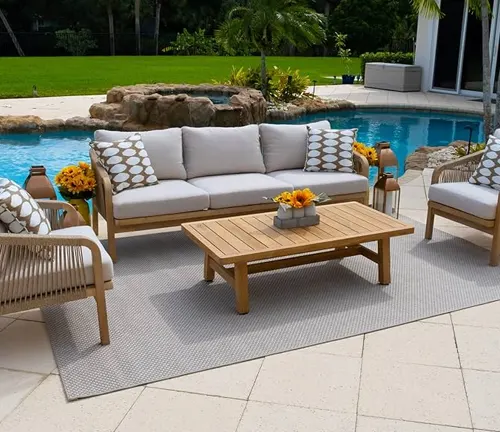
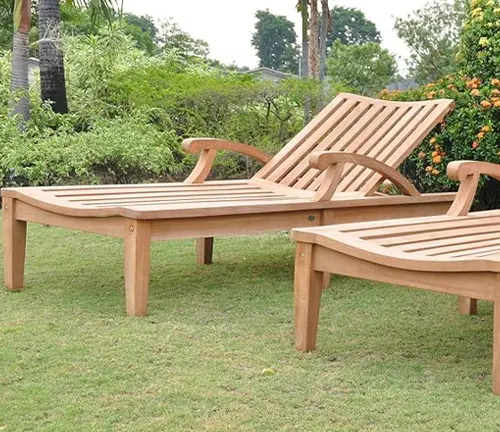
Opting for teak provides numerous benefits:
- Durability: Teak wood stands out for its longevity, easily lasting decades with minimal maintenance.
- Resistance: Its natural oils protect it from decay, rot, and insect infestation, making it suitable for any climate.
- Investment Worthiness: Although it comes at a higher cost, teak’s durability and low upkeep costs justify the initial investment, making it a smart choice for long-term projects.
Environmental Considerations: Teak wood is harvested from controlled plantations designed to ensure sustainability. These measures help maintain an ecological balance and make teak a more environmentally responsible choice.
5. Pressure-Treated Lumber
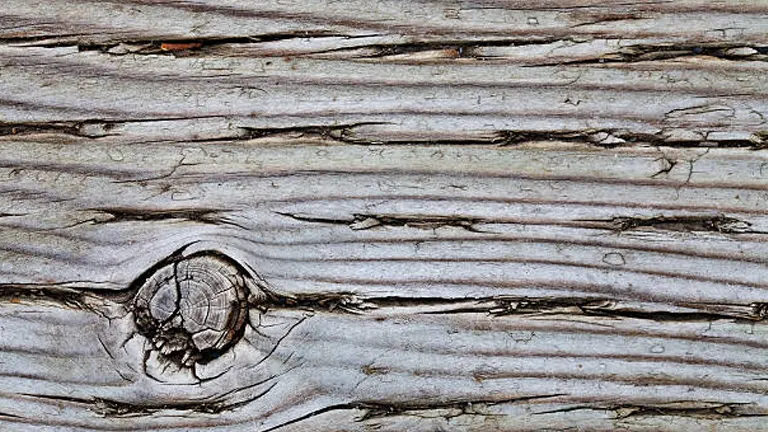
Pressure-treated lumber is crafted by infusing chemicals into softwood, such as pine, to enhance its resistance to rot, decay, and insects. This wood undergoes a process in a depressurized holding tank where air is extracted and replaced with a preservative. The result is a robust material designed to withstand harsh outdoor conditions, making it an ideal choice for exterior construction.
Best Uses: Pressure-treated lumber is ideally suited for a variety of outdoor applications where durability and resistance to environmental factors are crucial. It is extensively used in constructing decks, fences, and landscaping structures, where its longevity and strength are essential. Additionally, this type of lumber is favored for building playground sets and garden beds, offering enhanced durability and safety characteristics that are vital for structures in frequent contact with soil and moisture.
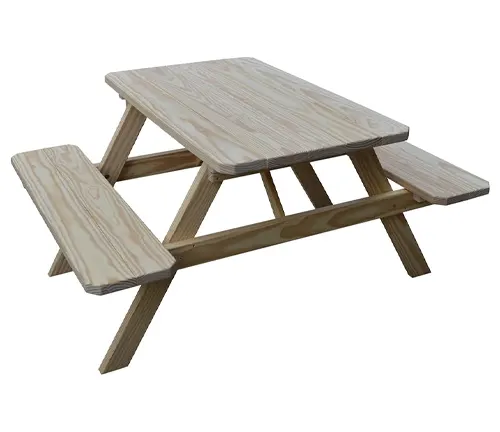
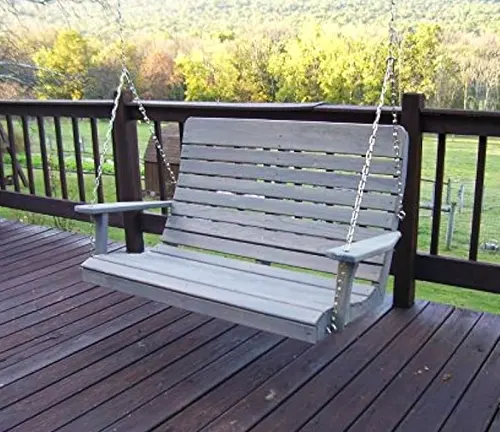
Choosing pressure-treated lumber is beneficial for several reasons:
- Durability: It is engineered to resist severe weather conditions, decay, and pest damage, making it suitable for outdoor use where other types of wood might fail.
- Protection: The chemical treatment provides a barrier against moisture and organisms that cause decay, substantially extending the life of projects that are exposed to the elements or have direct ground contact.
- Cost-Effectiveness: Despite the upfront cost, the long-term savings in maintenance and replacement make pressure-treated lumber a cost-effective choice for outdoor structures.
Environmental Considerations: Pressure-treated lumber is treated with environmentally safer preservatives than in the past, reducing the impact on the surrounding soil and vegetation. It is important to handle and dispose of any cut-offs or waste according to local environmental regulations to ensure safety and sustainability.
6. Oak Wood
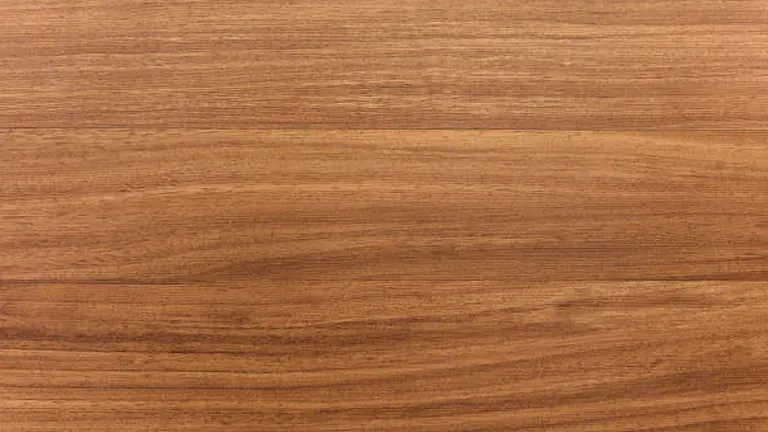
Oak is renowned in the wood industry for its exceptional strength, durability, and attractive grain patterns. Available in several species, the most common are white and red oak. White oak is particularly valued for its moisture resistance, making it suitable for outdoor environments, while red oak, known for its finer grain, is preferred for indoor applications.
Best Uses: Oak’s hardiness and aesthetic appeal make it a top choice for a wide range of applications. It is extensively used in the construction of high-quality furniture, sophisticated flooring, and intricate architectural details. Its natural resistance to fungal and insect attacks allows for versatile use in both indoor and outdoor settings, including heavy-duty structures like beams, high-traffic flooring, and decorative paneling.
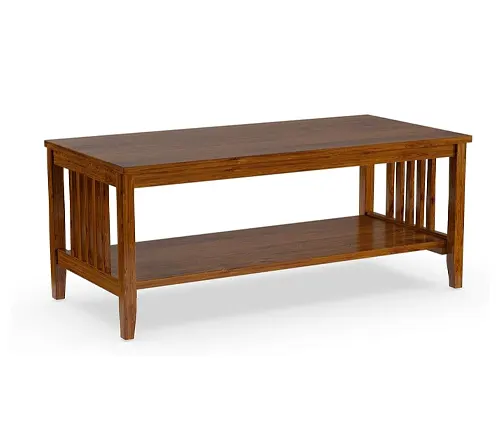
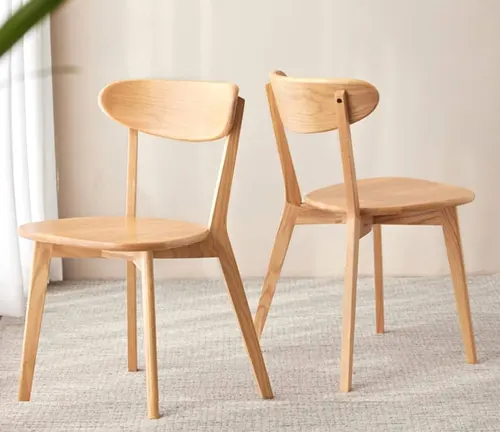
Opting for oak offers numerous advantages:
- Durability: Oak’s dense structure and high tannin content make it inherently strong and resistant to wear, ensuring longevity in furniture and architectural applications.
- Aesthetic Versatility: With its prominent grain and warm tones, oak wood can enhance any space with a touch of natural elegance and sophistication. It is equally adept at complementing traditional and modern designs.
- Functional Flexibility: Oak’s robust nature makes it ideal for a variety of demanding applications, from durable flooring in busy areas to supportive beams in construction, providing both strength and beauty.
Environmental Considerations:
Oak is a sustainable wood choice when sourced responsibly. Its long lifespan reduces the need for frequent replacements, and managing oak forests sustainably ensures that this valuable resource continues to contribute to ecological diversity while providing raw materials.
7. Walnut Wood
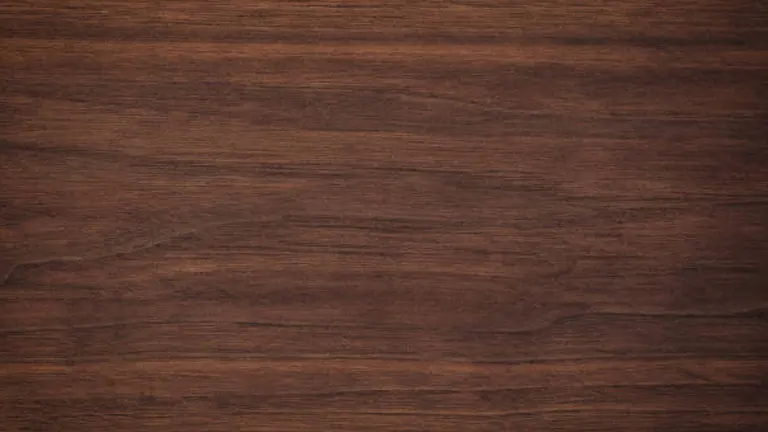
Walnut is celebrated for its rich, dark color and fine, straight grain, which can sometimes exhibit a wavy pattern that enhances its visual allure. Sourced primarily from the robust and dense walnut tree, this hardwood’s deep, chocolatey tones make it a favored choice for luxury and high-end decorative projects.
Best Uses: Walnut’s strength and workability make it highly sought after for crafting high-end furniture such as dining sets, desks, and armoires. Its aesthetic appeal and durability also make it ideal for ornate carvings, gunstocks, and musical instruments, where both beauty and structural integrity are essential.

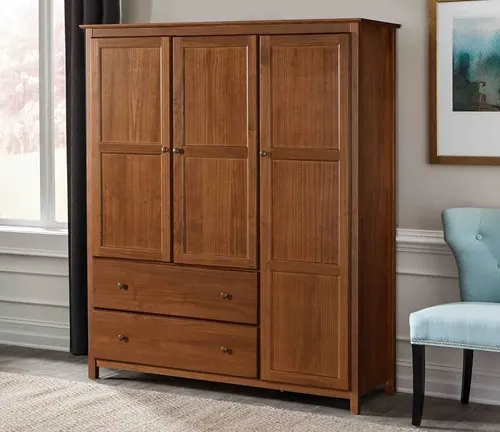
Choosing walnut wood for your projects offers significant advantages:
- Durability: Known for its strong composition, walnut withstands the rigors of daily use, making it ideal for furniture that bears regular stress.
- Aesthetic Appeal: The rich colors and intricate grain patterns of walnut add a luxurious and sophisticated touch to any piece, enhancing the overall design of interior spaces.
- Aging Quality: Walnut is renowned for its ability to develop a lustrous patina over time, which enhances its beauty as it ages, making it a great investment for heirloom-quality pieces.
Environmental Considerations: Walnut trees are typically grown in managed forests, and responsible harvesting practices ensure the sustainability of this precious resource. The durability of walnut also means that products made from this wood are long-lasting, reducing the need for replacement and minimizing waste.
8. Mahogany Wood
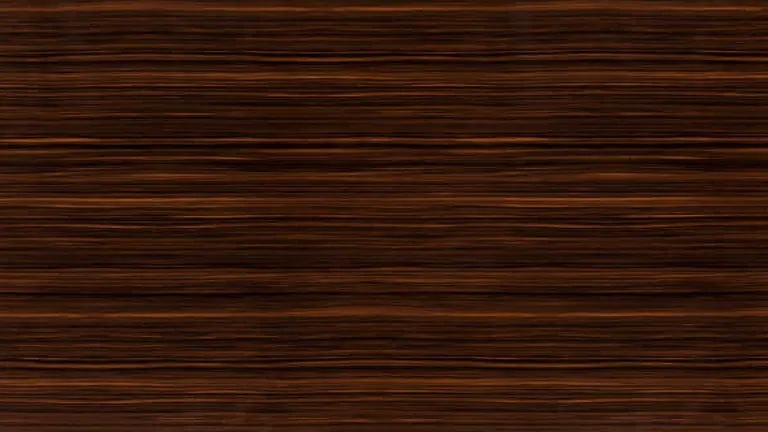
Mahogany is renowned for its outstanding beauty and durability. It boasts a straight, fine, and even grain with a rich reddish-brown hue that deepens elegantly over time. Known for its stability, mahogany resists shrinking, swelling, and warping, which makes it exceptionally suited for high-quality furniture and precision joinery.
Best Uses: Mahogany’s excellent workability and superior finish quality make it a preferred choice for a variety of luxury applications. It is extensively utilized in crafting high-end furniture, boat building, and sophisticated cabinetry. Additionally, its aesthetic qualities and acoustic properties make it ideal for creating musical instruments and detailed wood sculptures.

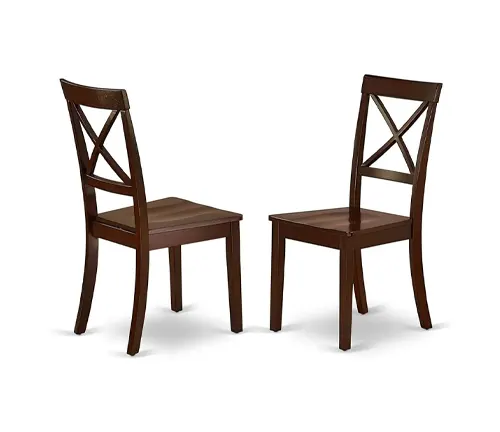
Opting for mahogany offers several significant benefits:
- Superior Finish and Durability: Mahogany not only enhances projects with its fine finish but also offers long-lasting durability, making it suitable for both structural and decorative pieces.
- Sophistication: The wood’s rich color and grain add a level of sophistication and luxury to any project, making it a favorite for furniture and designs that aim to impress.
- Versatility: Whether used in traditional settings or modern designs, mahogany’s timeless appeal makes it versatile for a wide range of applications.
Environmental Considerations: Mahogany is sourced from responsibly managed forests to ensure sustainability. Its long lifespan further promotes environmental responsibility by reducing the frequency of replacement. Using mahogany supports forestry practices that are both economically viable and ecologically balanced.
9. Ash Wood
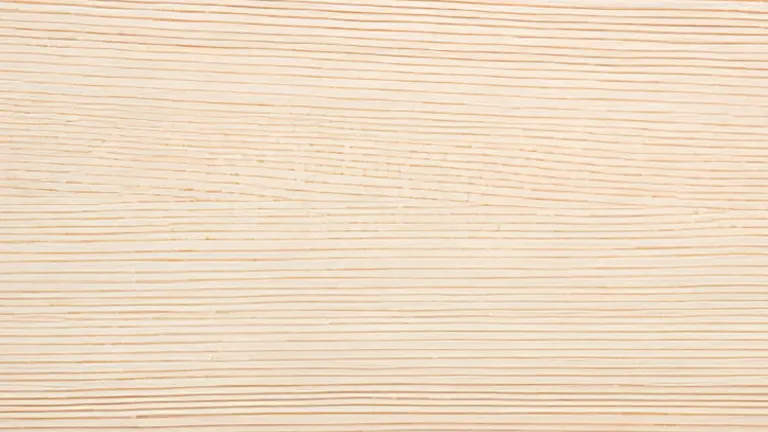
Ash wood, known for its light color ranging from white to light brown, is appreciated for its elasticity and strength. It features a bold, straight grain that enhances both its workability and aesthetic appeal. Particularly valued for its resilience, Ash is frequently used in applications that require both durability and flexibility.
Best Uses: Ash is ideally suited for sporting goods such as baseball bats and hockey sticks due to its excellent shock resistance. It is also popular in furniture making, especially for pieces requiring bending such as curved chairs. Additionally, its appealing grain makes it a preferred choice for decorative panels and detailed millwork.
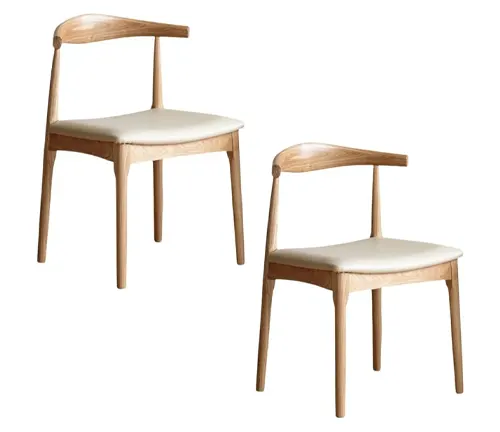
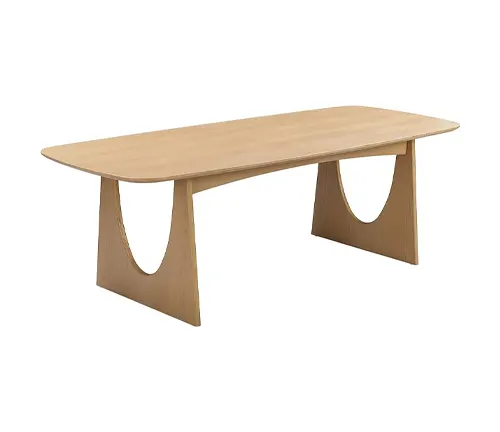
Choosing Ash offers several advantages:
- Durability and Flexibility: Ash’s strength and elasticity make it perfect for high-impact sports equipment and stylish, durable furniture.
- Visual Appeal: The wood’s pronounced grain and natural light color add a bright, welcoming tone to any interior, making it sought after for home decor.
- Workability: Ash is easy to handle, cut, and shape, which is particularly beneficial for intricate designs and detailed craftsmanship.
Environmental Impact: Ash grows relatively quickly and is harvested from forests that are managed for sustainability, making it an environmentally responsible choice. Its longevity and the ability to be recycled further minimize its ecological footprint, enhancing its appeal among eco-conscious consumers.
10. Pine Wood
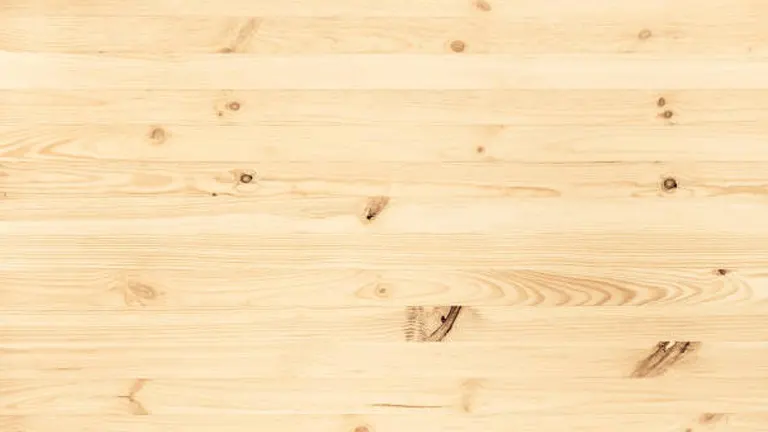
Pine, a softwood recognized for its light color which ranges from creamy white to yellowish, is notable for its prominent grain that often features distinctive knots. Its rapid growth and high renewability make pine an environmentally friendly option. Additionally, pine is appreciated for its excellent workability and versatility, easily accommodating a wide range of finishes and treatments.
Best Uses: Pine is widely employed in creating affordable furniture and rustic décor, making it a staple in homes seeking a warm, natural look. It is also favored for interior trim, paneling, and flooring, not just for its ease of use but also for the inviting character it lends to any project. Its softness allows for intricate carving, making pine a popular choice for detailed craftwork.
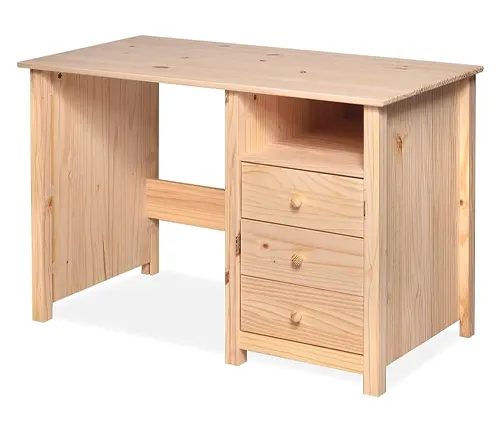

Choosing Pine offers multiple advantages:
- Cost-Effectiveness: Pine provides exceptional value, making it accessible for various projects from large-scale constructions to small DIY crafts.
- Aesthetic Versatility: With its ability to beautifully accept stains and paints, pine can be adapted to suit a multitude of styles and preferences, enhancing its appeal for customizable home projects.
- Ease of Use: Known for its softness, pine is easy to cut, shape, and finish, which is particularly beneficial for intricate designs and quick modifications.
Environmental Impact: Pine trees are fast-growing and commonly cultivated in well-managed forests, contributing to sustainable forest management practices. This makes pine a prudent choice for those looking to minimize their environmental footprint. Its durability and ease of recycling further bolster its status as an eco-friendly material.
11. Beech Wood
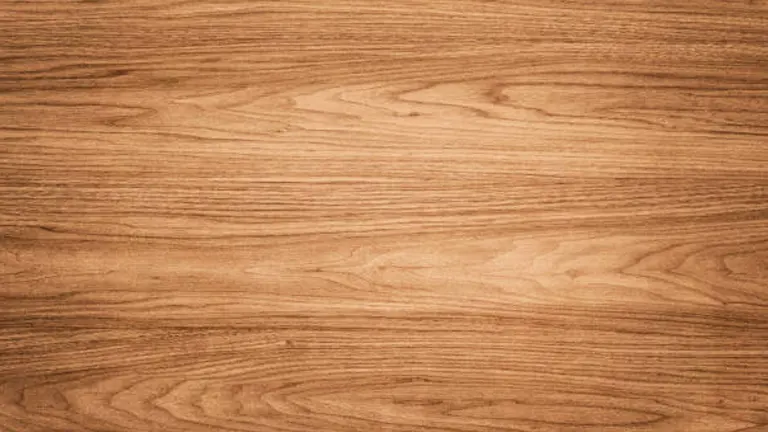
Beech is a valued hardwood recognized for its strong, pale cream color, fine grain, and smooth, even texture. It boasts exceptional durability and resistance to wear, making it a reliable material for items subjected to heavy use. The wood typically displays a straight grain, but it can also feature a wavy pattern that enhances its visual appeal and adds a touch of elegance to its finish.
Best Uses: Beech wood is extensively utilized in the production of robust furniture and fittings. It is especially popular for constructing chairs, desks, and other furnishings that require a solid, stable base and can withstand frequent use. Additionally, its hardness and resistance to abrasion make it ideal for crafting kitchen tools like cutting boards and for manufacturing indoor sports equipment where durability is crucial.
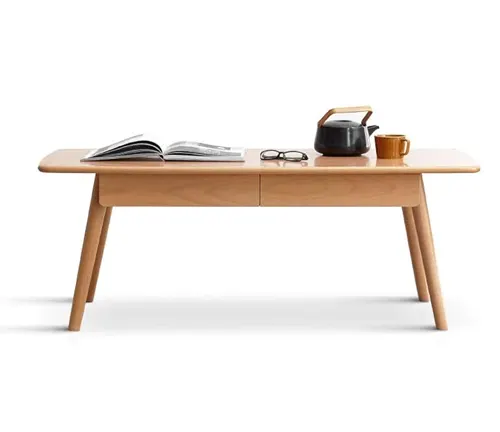

Why Choose Beech: Opting for beech wood offers significant advantages for woodworking projects:
- Durability: Beech is known for its ability to endure intense use without significant wear, making it suitable for both commercial and residential furniture.
- Smooth Finish: The fine grain of beech wood allows it to be finished to a high standard, resulting in a sleek, attractive surface that enhances any piece.
- Aesthetic Flexibility: Whether left natural or stained, beech wood complements a wide range of design aesthetics, fitting seamlessly into various decor styles thanks to its subtle grain and consistent texture.
Environmental Impact: Beech trees grow relatively fast and are commonly found in sustainably managed forests, making the use of beech wood a more environmentally friendly choice. The longevity of beech wood products also contributes to sustainability, as longer-lasting products reduce the need for frequent replacement and the consequent use of natural resources.
Comparison Table
Scientific Table of Wood Properties
| Wood Type | Density (kg/m³) | Janka Hardness (N) | Moisture Content (%) | Unique Properties | Typical Applications |
|---|---|---|---|---|---|
| Cedar | 380 | 4,000 | 12-15 | Insect repellent oils, decay resistance | Outdoor furniture, shingles |
| Maple | 700 | 6,450 | 6-9 | High abrasion resistance | Flooring, cutting boards |
| Poplar | 450 | 2,400 | 8-12 | Lightweight, easy to dye | Interior trim, craft projects |
| Teak | 650 | 5,500 | 10-14 | Natural oil content, high weather resistance | Boat building, outdoor furniture |
| Oak | 750 | 6,000 | 9-14 | High strength, durability | Structural beams, flooring |
| Walnut | 610 | 4,500 | 8-10 | Rich color, grain aesthetics | Luxury furniture, gunstocks |
| Mahogany | 545 | 5,100 | 10-12 | Excellent workability, rot resistance | High-end furniture, boats |
| Beech | 720 | 6,200 | 10-15 | High shock resistance, uniform texture | Furniture, sports equipment |
| Ash | 670 | 6,100 | 8-11 | Flexibility, impact resistance | Sporting goods, furniture |
| Pine | 420 | 3,700 | 12-16 | Soft, easy to work with | Affordable furniture, paneling |
| Birch | 670 | 5,900 | 10-15 | Fine grain, smooth texture | Plywood, interior finishing |
The table effectively illustrates the distinct properties and optimal uses of various woods, integrating scientific metrics like density and Janka hardness with practical applications. Highlighting how specific characteristics such as Teak’s natural oils or Cedar’s insect repellence determine their suitability for environments from outdoor spaces to high-traffic areas, it supports informed decision-making in wood selection. Additionally, it underscores environmental impacts, promoting sustainable choices by comparing growth rates and regeneration capabilities, essential for responsible sourcing and use.
Historical Uses of Wood
Wood has played a pivotal role in human civilization, serving not only as a crucial building material but also as a significant cultural and technological influencer. The properties of different types of wood, combined with their geographic availability, have shaped societies and influenced the development of civilizations across various eras.
Cedar and Oak:
- Cedar: Historically, cedar wood, particularly from the Cedar of Lebanon, was indispensable in ancient maritime cultures. Its natural oils and decay resistance made it ideal for constructing durable and seaworthy vessels, such as those used by the Phoenicians for Mediterranean trade and exploration. Cedar also held religious significance and was used in the building of temples and palaces.
- Oak: In Europe, oak was a symbol of strength and endurance. It was extensively used in constructing everything from Viking longships that crossed the Atlantic, to the robust frames of medieval cathedrals and the iconic English “oak-beamed” houses. Its density, which ranges from 600 to 900 kg/m³, made it ideal for structures requiring longevity and resistance to the elements.
Exotic Woods:
- Mahogany and Teak: Mahogany, sourced primarily from the rainforests of Central and South America, and Teak, native to Southeast Asia, were highly prized by European colonial powers. Their exceptional hardness and resistance to rot made them favorites for shipbuilding and high-status furniture that adorned the manors and palaces of the elite. The high silica content in teak (up to 1.4% by dry weight) makes it particularly resistant to fungal decay and marine borers, enhancing its value for nautical uses.
Comparative Table of Historical Wood Uses
| Wood Type | Density (kg/m³) | Historical Uses | Notable Properties |
|---|---|---|---|
| Cedar | 380 – 480 | Shipbuilding, religious structures | Decay resistance, aromatic |
| Oak | 600 – 900 | Viking ships, medieval architecture | Strength, toughness |
| Mahogany | 550 – 850 | Luxury furniture, colonial-era ships | Beauty, durability |
| Teak | 630 – 720 | Colonial shipbuilding, high-end furniture | Durability, fungal resistance |
DIY Projects for Different Wood Types
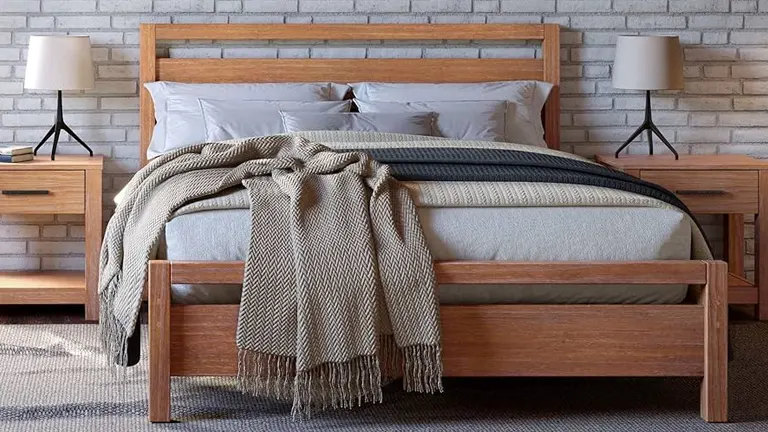
Engaging with wood on a personal level can be both educational and fulfilling. These DIY projects are tailored to showcase the unique qualities of various woods, offering a hands-on experience that reflects the functional beauty of each type.
Projects Detailed
Cedar Birdhouse: Build a birdhouse using cedar, known for its excellent durability and natural resistance to rot, decay, and insect attacks. Cedar contains natural oils that repel pests, making it ideal for outdoor structures. This project not only serves as a refuge for birds but also withstands harsh weather, ensuring longevity. The wood’s aromatic qualities can also enhance the sensory experience of your garden.
Maple Cutting Board: Utilize maple, renowned for its density and resistance to bacteria, to craft a cutting board that promises longevity and hygiene. Maple’s tight grain structure minimizes moisture absorption and prevents bacterial growth, making it a top choice for culinary tools. Its smooth surface also protects knives from dulling too quickly, combining functionality with safety in kitchen environments.
Poplar Picture Frames: Choose poplar for creating custom picture frames. This wood’s softness allows for easy machining and shaping, making it perfect for detailed workmanship without the need for advanced tools. Poplar’s light color and fine grain make it an excellent canvas for paint and stains, allowing you to personalize decor while achieving professional-looking results.
Teak Garden Bench: Craft a garden bench from teak, a wood prized for its exceptional weather resistance and durability. Teak contains natural oils that protect it from the elements, preventing warping and decay. It’s the perfect material for outdoor furniture, offering a stylish solution that ages gracefully, gaining a silver-gray patina that enhances its beauty over time.
Oak Bookshelf: Channel the robustness and impressive load-bearing capacity of oak into crafting a sturdy bookshelf. Oak’s dense structure makes it capable of supporting substantial weight, ideal for a large collection of books or heavy ornaments. Its distinctive grain pattern adds a touch of elegance, making it not just functional but also a statement piece in any room.
Maintaining Wood Products
The longevity and aesthetic quality of wood products significantly depend on proper care and maintenance. This section provides essential tips for preserving different types of wood, ensuring they maintain their beauty and functionality over time.
Comprehensive Care Instructions:
- Routine Cleaning: Regular cleaning with a soft cloth dampened in a gentle cleaner can protect wood surfaces from buildup and staining. For outdoor wood like teak, periodic treatments with oil can renew its resistance to weather.
- Protective Measures: Shield wood from direct sunlight and moisture to prevent warping and fading. Use drapes or blinds in sunny rooms and coasters or pads to guard against water rings and heat damage.
- Repair and Restoration: Small scratches and dents can often be fixed at home with simple polishing or a touch-up kit designed for wood. Deeper gouges might require wood filler and some sanding, followed by staining to match the original finish.
Wood’s Future: Innovation and Sustainability
As we look to the future, wood continues to play a crucial role in both traditional uses and innovative applications. Sustainable practices and technological advancements are opening new avenues for wood as a material of the future.
Forward-Looking Trends:
- Technological Advances: Developments such as engineered wood for use in flexible or high-strength applications are transforming industries, from construction to electronics.
- Sustainability Focus: The shift towards reclaimed and sustainably sourced wood is becoming more pronounced, driven by environmental awareness and consumer demand for responsible products. Initiatives like reforestation and certified sustainable forestry practices are ensuring wood remains a viable and environmentally friendly resource.
Related Post
Conclusion
Understanding the unique characteristics of different types of wood and their optimal uses allows for better decision-making in any woodworking project. By considering the attributes discussed in this guide, you can select the most suitable wood for your specific needs, ensuring both functionality and aesthetic appeal. We encourage sustainable practices to ensure these resources are available for future generations.
FAQs
- What are the main differences between hardwood and softwood?
Hardwoods, sourced from deciduous trees, generally have a denser structure than softwoods, which come from coniferous trees. This makes hardwoods ideal for furniture and flooring, while softwoods are often used for construction and paper products due to their faster growth rates and easier workability. - Can cedar wood be used for indoor furniture, or is it just for outdoor use?
Cedar is excellent for outdoor use due to its natural resistance to decay and insects, but its aromatic properties and beautiful grain also make it a great choice for indoor items like chests, wardrobes, and decorative panels. - Why is teak considered the best wood for outdoor furniture?
Teak is highly prized for outdoor furniture due to its strong resistance to weather conditions, water, and pests. Its natural oils help prevent the wood from drying out, cracking, or warping, making it exceptionally durable even in harsh climates. - What type of wood should I choose for a kitchen cutting board?
Maple is one of the best choices for kitchen cutting boards because of its durability and resistance to bacteria. Its tight grain prevents deep scratches, making it more sanitary compared to softer, more porous woods. - Is there a cost-effective wood that looks good and works well for indoor furniture?
Poplar is an affordable option that, while often overlooked, offers a smooth finish and is easy to paint or stain. It’s perfect for furniture pieces that don’t require the strength of hardwoods, like dressers or side tables. - How do I maintain the finish on my oak dining table to keep it looking new?
To maintain an oak table, regularly dust it and clean with a slightly damp cloth. Avoid harsh chemicals, and consider using coasters and placemats to protect the surface from heat and moisture. Periodically treat the wood with a suitable wood polish or wax to enhance its natural grain and protect the surface. - What makes walnut wood a popular choice for luxury furniture?
Walnut’s popularity for luxury furniture stems from its rich, dark color and fine grain, which give it a sophisticated appearance. It’s also very durable and holds shapes and details well, making it ideal for high-end, intricate furniture designs. - Are there any environmentally friendly woods that I can use for my projects?
Bamboo, while technically a grass, is often used as a sustainable alternative to traditional wood because it grows quickly and doesn’t require replanting. Among true woods, using locally sourced woods or reclaimed wood are environmentally friendly options, as they reduce the environmental impact associated with transportation and deforestation.
That’s a wrap on our guide to 11 popular wood types. With this clear-cut knowledge, you’re ready to tackle your next project with confidence. Choose wisely and create something great!

Benjamin Brooks
Forestry AuthorGreetings! I'm Benjamin Brooks, and my journey over the past 15 years has revolved around the fascinating realms of content creation, expertise in snow clearing, and the intricate world of lumberjacking and landscaping. What began as a simple curiosity about the natural world and heavy machinery has evolved into a passionate profession where my love for crafting words intertwines seamlessly with my lumberjacking and garden skills.

Leave your comment